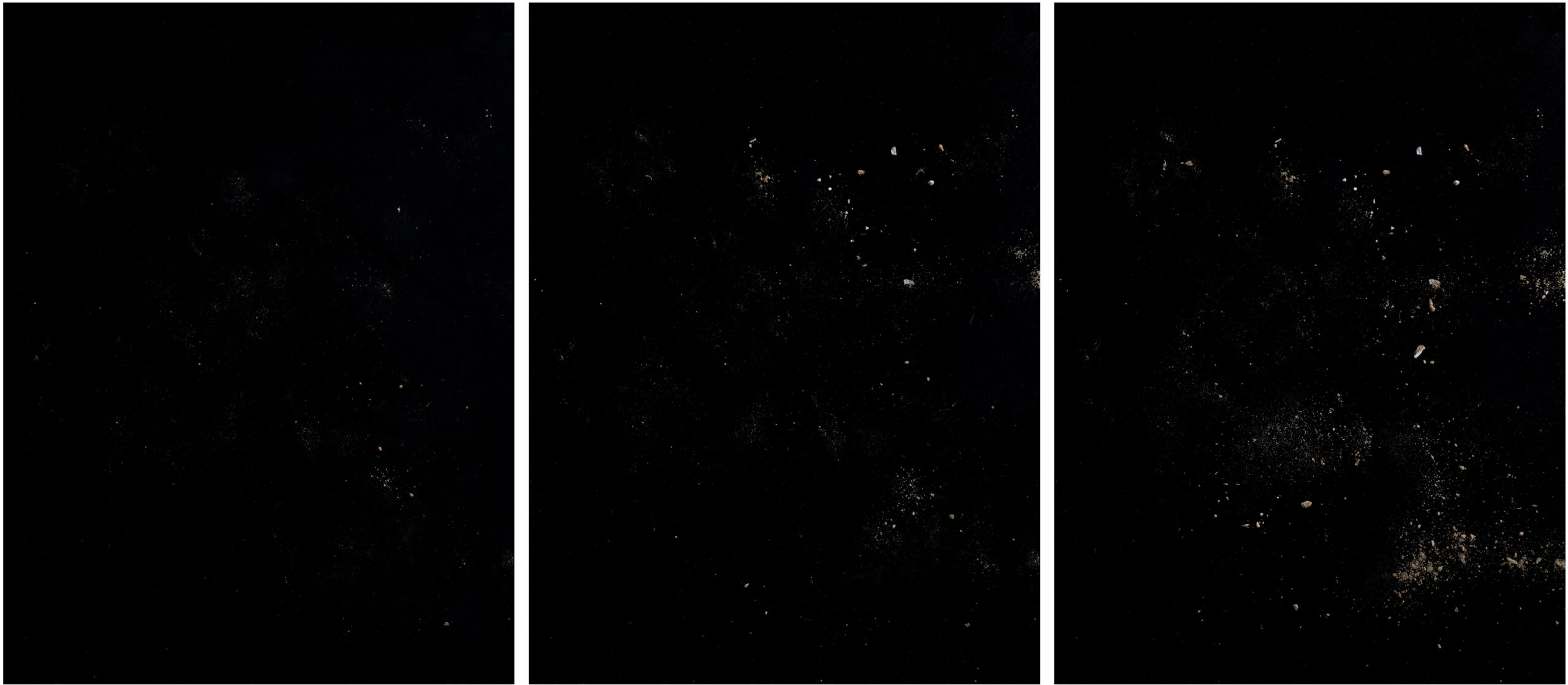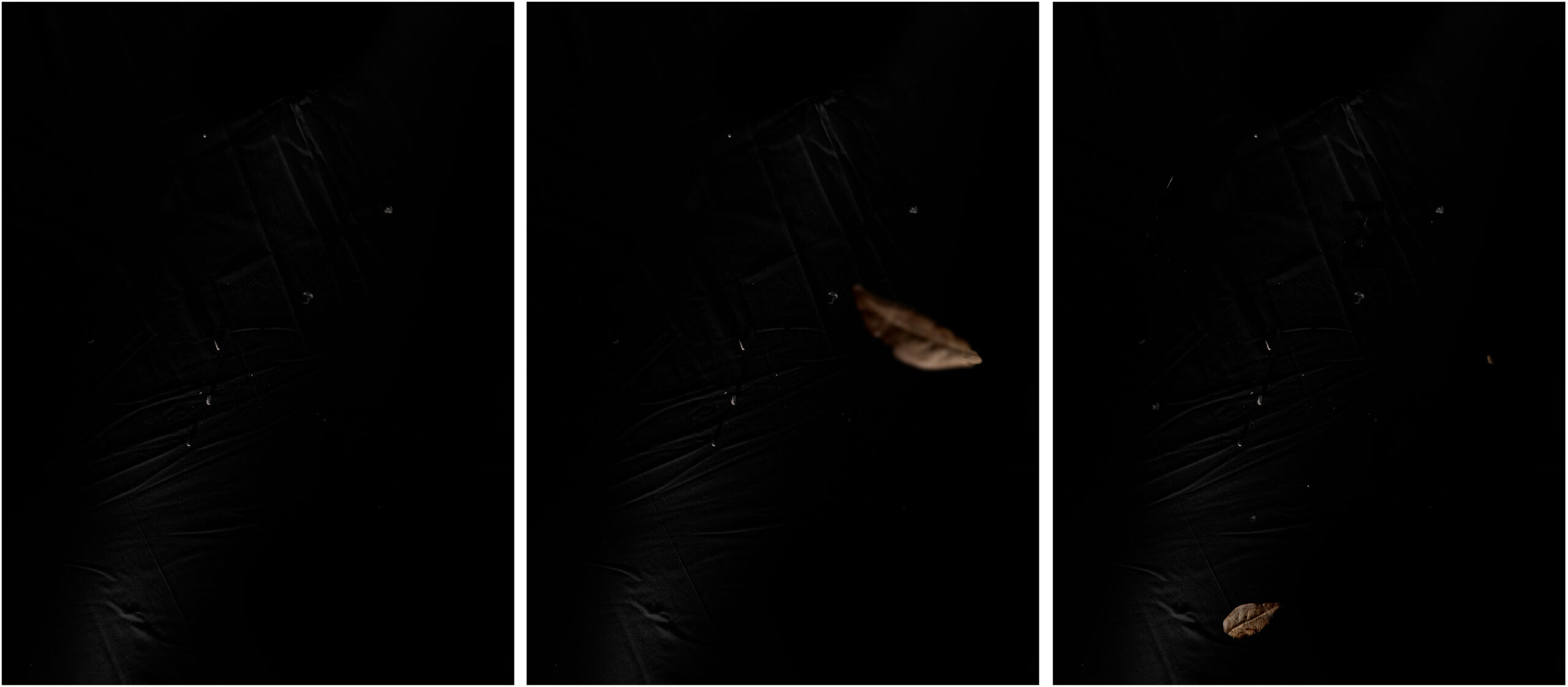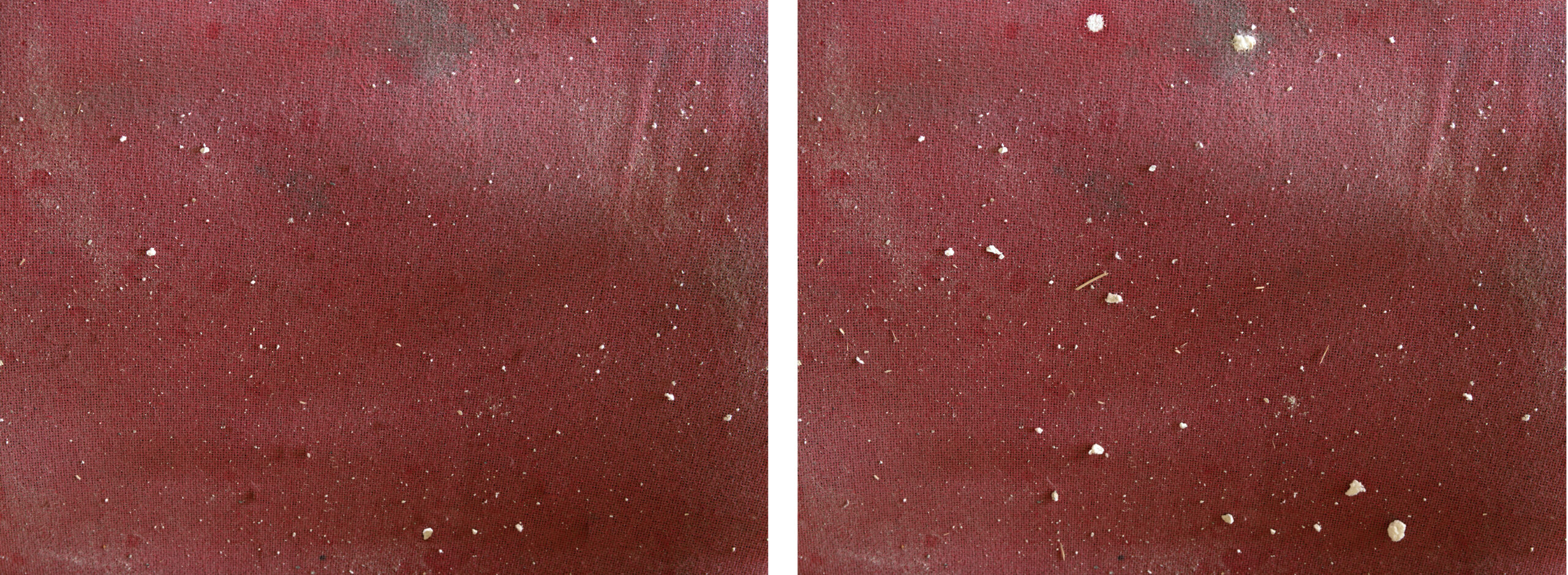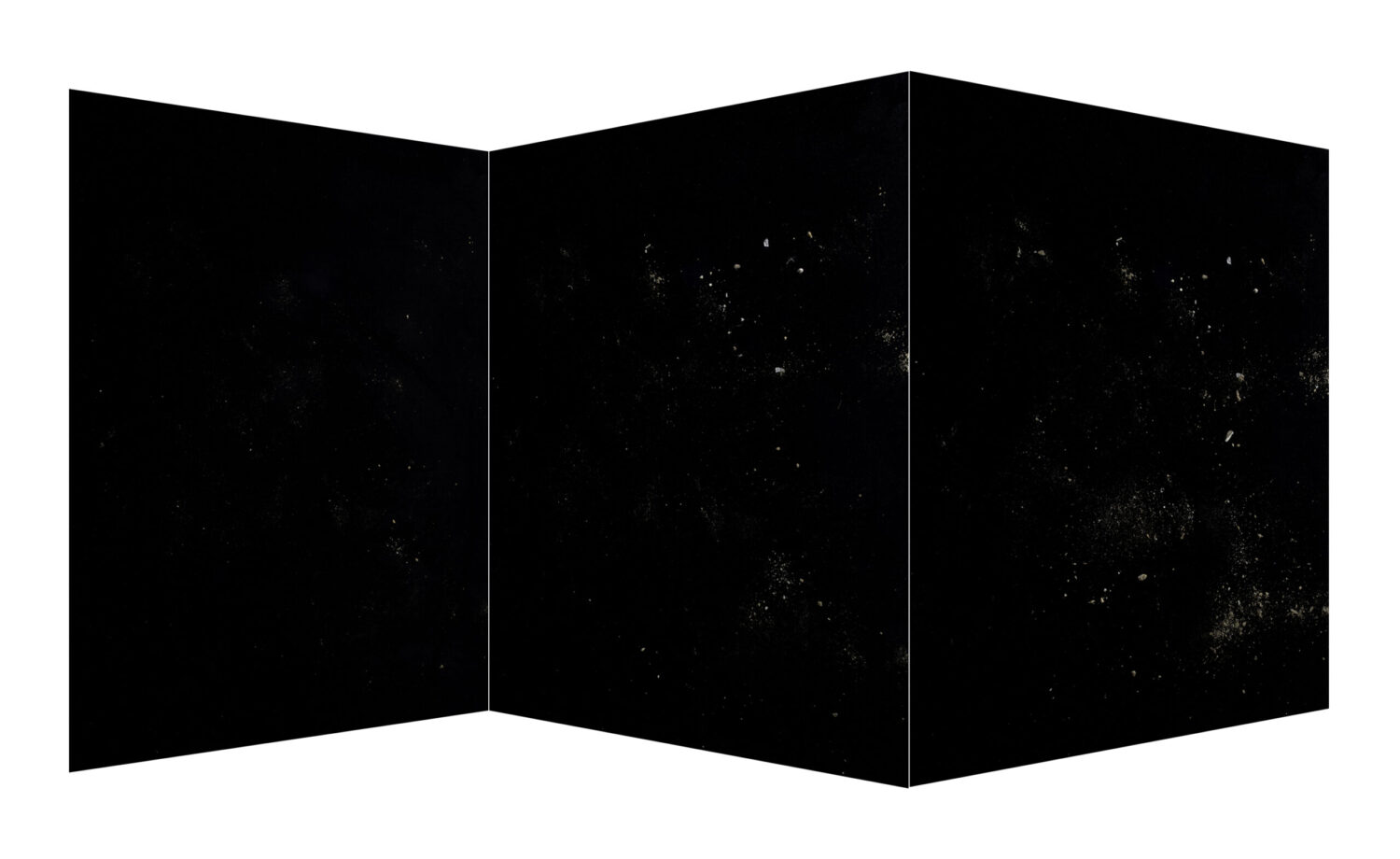EXHIBITIONS AND CONTEST
2024 Cosmologie, curator A. Madesani, Spazio21, Lodi, Milano, Italy [invitation] [Cosmologie Exhibition] [site specific installation at Cosmologie exhibition]
Polvere, ultima frontiera
La polvere mossa dall’aria si posa sulle superfici di ogni luogo. Le sequenze di immagini ne mostrano il movimento e l’accumulo, come su un piano cartesiano dove un asse è il tempo: sovrapporsi e fermarsi di detriti, incongruità, perdite. Dalla costante erosione della terra e dei corpi deriva una materialità minima e, nella sua sostanza collettiva, incoercibile. L’assenza di polvere su una superficie che prima ospitava un oggetto, rappresenta la realtà dell’oggetto nella sua integrità, benché spostata altrove – o svanita. La presenza della polvere al contrario rappresenta una perdita infinita, continua, al di là della nostra coscienza.
Polvere sei e in polvere ritornerai, così la Genesi parla dell’origine dell’uomo, della sua sostanza e del tempo del suo esistere. Tra la polvere sta la nostra vita, il mistero che la avvolge, gli attimi che passano inosservati. Spogliata della sua individualità, ogni cosa prende la forma di polvere, metafora dell’usura, del disfacimento, della nostra inconsistenza. Essa si muove, passa, ricopre e segna il nostro passaggio, come una forma silenziosa di memoria collettiva. Concreta e sfuggente al contempo, la polvere consacra ciò che non è più riedificandolo nel regno dell’infrasottile: ultima frontiera spaziale dell’esistente.
La polvere, monade della nostra soggettività, esito della perdita, è sacralizzata in un templum minimale: eredità dell’estetica delle rovine e riflessione sul continuo farsi e disfarsi della memoria affidata alle cose, ridotta a forme minute che danzano in una lama di luce filtrata da un’imposta socchiusa, eppure pronte ad aggregarsi nuovamente, in un nuovo disegno.
Le immagini della polvere sono domande sulla percezione umana della realtà: sembrano dirci che solo da questa interrogazione nasce la possibilità che una particella di verità e di bellezza impersonale si manifesti in noi, oltre i confini dell’Io.
“…io non veggio che di me altro possa avvenire che quello che della minuta polvere avviene, la quale, spirante turbo, o egli di terra non la muove, o se la muove, la porta in alto e spesse volte sopra le teste degli uomini, sopra le corone dei re e degl’imperadori, e talvolta sopra gli alti palagi e sopra le eccelse torri la lascia; delle quali se ella cade, più giù andar non può che il luogo onde levata fu” (Boccaccio, Decameron)
Paolo Parma, 2023
Dust, last frontier
The dust moved by the air is resting on the surfaces of each place. The sequences of images show their movement and accumulation, as on a Cartesian plane where an axis is time: overlapping and stopping with debris, incongruity, losses. From the constant erosion of the earth and bodies derives a minimal materiality and, in its collective substance, incoercible. The absence of dust on a surface that previously housed an object represents the reality of the object in its integrity, although moved elsewhere – or vanished. The presence of the dust on the contrary represents an infinite loss, continues, beyond our consciousness.
Dust you are and to dust you will return, thus Genesis speaks of the origin of man, of his substance and of the time of his existence. Among the dust lies our life, the mystery that surrounds it, the moments that go unnoticed. Stripped of its individuality, everything takes the form of dust, metaphor of wear, decay, of our inconsistency. It moves, passes, covers and marks our passage, as a silent form of collective memory. Concrete and elusive at the same time, the dust consecrates what is no longer re -editing it in the kingdom of infraziotile: the last spatial frontier of the existing.
The dust, the monad of our subjectivity, the outcome of the loss, is sacralized in a minimal temple: inheritance of the aesthetics of the ruins and reflection on the continuous making and defeat the memory entrusted to things, reduced to minute shapes that dance in a blade of filtered light From a touched tax, yet ready to join again, in a new drawing.
The images of the dust are questions about the human perception of reality: they seem to tell us that only from this question is the possibility that a particle of truth and impersonal beauty manifests itself in us, beyond the boundaries of the ego.
“… I do not see that I can happen to me than that of the minute dust happens, which, spirant turbo, or he does not move from earth, or if he moves it, the door high and thick times above the heads of men, above the crowns of kings and imperadori, and sometimes above the high palaces and over the excellent towers leaves it; of which if she falls, further down it can only be the place in order to raise “(Boccaccio, Decameron)
Paolo Parma, 202 3
EDITIONS of 3+ 2 a.p. Giclèe prints on cotton paper all made by the author




DIPTYCH 5471




EXHIBITIONS AND CONTEST
2024 Cosmologie, curator A. Madesani, Spazio21, Lodi, Milano, Italy [invitation] [Cosmologie Exhibition] [site specific installation at Cosmologie exhibition]